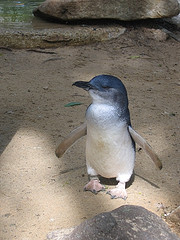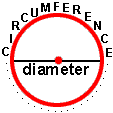Linear and Non Linear Functions
What is a function you may ask. A function is a factor that depends on another factor. Today we will be adresseing linear and non-linear functions using perimeter and area. I have made a graph to help explain our lesson for today.

Lets start off with linear functions. As you know perimeter has a pattern when you are trying to find it on a square. The rule is that it always goes up by four which leads the line to be completely straight and have no wierd intervals when it is graphed. This is because it has a constant rate of change, or more simply, a pattern. Here is a plain graph of a linear function.

Now onto non-linear functions. Area is non-linear. As you can see in the top graph the area has a very unsteady line. This is because it goes up two more than it had the last time. So in the end a non linear function is a function that does not have a constant rate of change.
I hope you learned a lot about linear and non-linear equations.
- »Permalink
- 1 Comments
- Posted by:Ian
Tesselations
Tesselations
A tesselation is a pattern of shapes that are put together and fit nicely around each other. Also there are no gaps between any of the shapes. There are a few types of tesselations. We will only be talking about two, which are the regular and the semi-regular tesselations.
Regular Tesselations
The Regular Tesselation is made up of only one congruent regular polygon at a time. Although only one shape at a time can be a tesselation there are still a few different types of shapes. Those are the square, the equlateral triangle, and a hexagon.
Example of a Regular Tesselation

That is a regular tesselation made out of hexagons.
Semi Regular Tesselations
A semi regular tesselation is a tesselation with more than one type of regular polygon and has the same arrangement at every vertex.
Example of a Semi Regular Tesselation
This is a semi regular tesselation made out of the hexagon and the equilateral triangle.

Vocab
Vertex-The point where shapes fit nicely around the one point.
Other Helpful Things
Here is a video about a Japanese Tesselation.
- »Permalink
- 2 Comments
- Posted by:Ian
Icy Times With Penguins
Penguins


What do you know about penguins? You are probably somewhat confident in your knowledge about the penguin species. Penguins are birds, so they can fly. Right? Wrong! Pengiuns always live in Antarctica. Yeah Sure. Wrong again! There are a lot of misconceptions about this very exotic species, but I am here to resolve all of your misunderstandings. Are you ready to learn the truth about penguins? Then read on...
Many people believe that penguins are an aquatic spieces. This is wrong for one very simple reason. Penguins do not have gills so they cannot be a fish. In the same catgory of questioning regarding what type of animal the penguin is, many people think they are a mammal like the dolphin. Once again they are wrong. They are wrong because penguins do not have hair. Penguins have feathers. What type of animal has feathers? Birds, of course. That is exactly what a penguin is. A bird. This is because penguins have feathers, and the motion while they are swimming is much more like they are flying than swimming like a fish. Another clue to knowing a penguin is a bird would be its flipper. The flipper has modified itself from a wing to a flipper that can accelerate the penguin under water.
 Earlier I had said that penguins live in different places other than Antartica. In fact, most penguins don't live in Antartica at all. Only two of the seventeen different penguin species live in Antartica. The part you wouldn't expect about this is that the other fifteen species live in some of the hottest places on earth. For Example, The Managellic penguin lives in Chile and Brazil which are in South America. The Managellic penguin leads us to our next topic which is the different types of penguins.
Earlier I had said that penguins live in different places other than Antartica. In fact, most penguins don't live in Antartica at all. Only two of the seventeen different penguin species live in Antartica. The part you wouldn't expect about this is that the other fifteen species live in some of the hottest places on earth. For Example, The Managellic penguin lives in Chile and Brazil which are in South America. The Managellic penguin leads us to our next topic which is the different types of penguins.
There are many different types of penguins and they range from being sixteen inches tall to being three feet tall. Also they range from being blue to being black. These examples show that the penguin species is extremely diverse. The most diverse of penguins is the little blue penguin (officially called the eudyptula minor by scientists). This penguin is the most strange when compared to other penguins because it is blue. It is also the smallest, weighing in at only two pounds and being only sixteen inches tall. Also another diverse penguin is the Macoroni penguin. Ths penguin is known for its unusual crest above it's eyes.Also while I am talking about different types of penguins I would like to name for you six out of the seventeen different types of penguins.There is the managellic,the macoroni,the emperor,the little blue penguin, the rockhopper,and the adelie.
Moving on to the next topic. Many people also have the stereo-type that penguins live an easy life. They don't. They have to be on the lookout for vicious leopard seals and they have to work hard to catch their own food. Even between all of these important activities a penguin needs to get through the most important part of it's life, breeding season. At this time millions of penguins are born. The average chick has everything it needs to survive except it shiny or waterproof feathers. Instead, it is born with brown, black, or grey feathers. It depends on what type of penguin it is. The adult penguins have to walk many miles just to feed the little chick. Adult penguins know it is worth it because thay are just helping the penguin species to survive for another generation.
The average penguin will start mating when it is five years old. It will live about ten to twenty years even though some penguins don't make it out of the early stage of being a chick, or even an egg. I hope you have learned a lot and enjoyed doing so. I also hope that you have forgotten all about those old stereo-types against penguins.The final thing I would like to say is that the penguins need yor help, so if you would like help, consider an adopt a penguin program.
hope you have learned a lot and enjoyed doing so. I also hope that you have forgotten all about those old stereo-types against penguins.The final thing I would like to say is that the penguins need yor help, so if you would like help, consider an adopt a penguin program.
Vocabulary
Complex-composed of many interconnected parts.
Accelerate-to cause faster or greater activity.
Components-a contiteunt element.
Diverse-of a different kind.
Breeding-to produce offspring.
Generation-the entire body of individuals born at about the same time.
I would like to thank youtube, the world factbook, and google images.
- »Permalink
- 1 Comments
- Posted by:Ian
Scribe Post #3
Learning Target
Comparing and ordering fractions
Steps
1. Find the LCM of the denominators to get the LCD.
2. Rewrite fractions as an equvilent fraction using the LCD.
3. Compare Fractions.
Examples
12 is <,>,= 13
48 24
48 24
2*24 12*2
2*2*12 3*4*2
2*2*3*4 3*2*2*3 LCM = 2*2*2*2*3 =48
2*2*3*2*2
12*1 = 12 13*2= 26
48*1 = 48 24*2= 48
12 < 13
48 48
One more Example for the people that don't understand.
1 is <,>,= 12
3 36
3 36
3 6*6 LCM=2*3*2*3=36
2*3*2*3
1 * 12 = 12 12 * 1 = 12
3 * 12 = 36 36 * 1 = 36
1 = 12
3 36
Abreviations
LCD - Least common denominator
LCM- Least common Multiple
HOPE YOU LEARNED A LOT !
- »Permalink
- 4 Comments
- Posted by:Ian
Scribe Post 2
Circumfrance
In class we learned about circumference. We learned that circumference is the distance around a circular object. We learned the formula to find the circumference even if you only have the diameter. The formula to do this is ∏ (3.14) multiplied by the diameter.For example lets say that the diameter of a coffee can is 5in. around.
3.14
x 5
15.70
Diameter & Radius
We also learned in class that the diameter is the distance between both sides fo a circle. Also the radius is half of the diameter.
For Example:
If the radius is 6 then then the diameter is 12 because 6x2=12.

You have just learned about circumfrance,the distance around a circle. Diameter, The distance between both sides of a circle. Also radius, half of the diameter.
Vocab
Circumfrance- distance around a circular object.
Diameter-distance between the sides of a circle.
Radius- half of the diameter.
- »Permalink
- 1 Comments
- Posted by:Ian